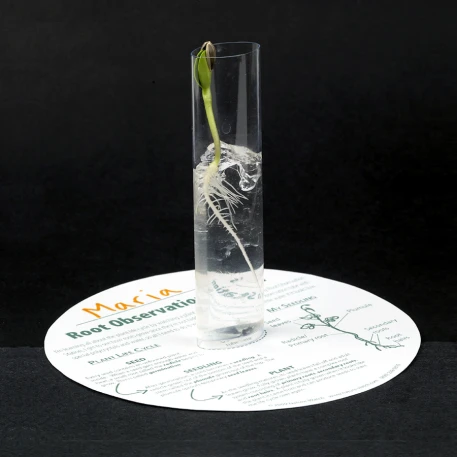Welcome to the fascinating world of root growth observation! This immersive activity not only nurtures a love for botany but also unveils the hidden intricacies that lie beneath the soil. In this article, readers can anticipate a comprehensive exploration of different methodologies for observing roots, the significance of root systems in plant health, and the potential benefits of engaging in such a hands-on activity. Ready to dig deep? Let’s embark on this botanical journey!
Understanding Root Systems
Roots are the unsung heroes of the plant kingdom. While the foliage may capture our attention with its vibrant colors and intricate shapes, the true foundation of a plant’s life occurs beneath the ground’s surface. Roots serve multiple functions—anchoring the plant, absorbing water and essential nutrients, and facilitating storage of energy. Understanding these hidden marvels is paramount for both budding horticulturists and seasoned botanists alike. Through root observation activities, participants can witness firsthand the myriad adaptations that roots undergo to thrive in diverse environments.
The Importance of Root Observation
Root observation is not merely an academic exercise; it can profoundly influence agricultural practices, contribute to ecological conservation, and enhance our understanding of plant biology. For instance, observing root growth and behavior can illuminate the effects of various soil types and environmental conditions on plant health. Furthermore, such activities can provide critical insights into how plants interact with one another and their surroundings, leading to improved sustainability practices.
One cannot overlook the educational aspect. Students of all ages can cultivate analytical skills while engaging in root observation projects. They learn to make hypotheses, document findings, and draw conclusions, all of which encourage scientific literacy and critical thinking. As the saying goes, “to understand the trunk, one must first know the roots.”
Types of Root Observation Activities
There are myriad methodologies one can employ to observe root growth. Here, we delve into several engaging activities that cater to various levels of expertise and environments.
- Clear Plastic Containers: One of the simplest yet most effective methods involves using clear plastic containers. By planting seeds in a transparent medium or soil within these containers, learners can witness root development as it unfolds. This method is particularly accessible and encourages ongoing observation.
- Aquatic Root Observation: For a more dynamic experience, consider using aquatic plants, such as water lilies or duckweed. Observing roots in water allows for an exciting display of growth patterns without the constraints of soil. This method also highlights the importance of hydroponics and aquatic ecosystems.
- Soil Digging and Observation: A more hands-on approach involves carefully digging around established plants to examine their root systems. This method necessitates caution to avoid damaging the plant but provides unparalleled insights into root morphology and health. It is best suited for advanced practitioners who have a basic understanding of plant physiology.
- Timed Growth Observations: Another fascinating activity involves planting seeds in controlled conditions and measuring their root growth daily over a designated period. This quantitative approach helps participants recognize patterns and draw correlations between environmental factors and root development.
Tools and Materials
- Containers: Clear plastic cups or pots work effectively for visual observation.
- Soil: A sterile potting mix ensures that the growth observed is due solely to the plant itself and not interferences from other organisms.
- Seeds or Seedlings: Choose fast-growing species such as beans or radishes to accelerate the observation process.
- Data Recording Tools: Journals or digital devices for documenting findings are crucial for analyzing root growth trends.
Interactive Component
Incorporating interactive elements into root observation can elevate the experience. Consider conducting group experiments where participants share insights and findings. This communal aspect can foster discussions about variances in root growth based on differing soil types or watering schedules. Moreover, utilizing technology—such as sending participants the latest scientific articles or employing apps that track plant growth—can augment the learning experience.
Scientific Applications
The implications of root observation extend far beyond educational settings. In agriculture, understanding root systems can revolutionize crop management and sustainable farming practices. Research into root architecture, for instance, can assist in designing plants that better withstand drought or increase nutrient uptake. Additionally, ecologists studying root interactions contribute to preserving ecosystems by understanding how plants compete for resources and how that affects biodiversity.
Conclusion
Engaging in root observation activities offers an unparalleled opportunity to connect with the natural world, fostering an appreciation for the intricate designs that sustain life. By actively participating in this exploration, individuals can not only expand their knowledge of botany but also contribute to broader ecological understanding and conservation efforts. With every root observed, the complexities of nature become a little less hidden, encouraging a deeper relationship between humanity and the environment.
So, whether you are a novice gardener, a curious student, or an experienced researcher, consider delving into the wondrous world of roots. With each observation, you are not merely witnessing growth; you are participating in a timeless dance of life. Prepare your tools, gather your materials, and embark on a root observation journey that promises to be both enlightening and fulfilling!









Leave a Comment